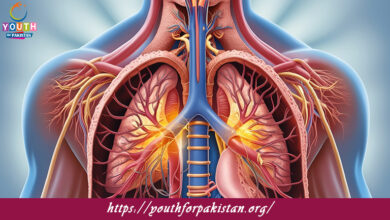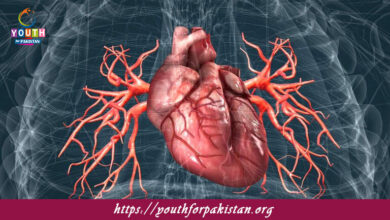Inheritance Of Two Traits MDCAT Quiz with Answers

Inheritance Of Two Traits MDCAT Quiz: The inheritance of two traits simultaneously is learned through dihybrid crosses, whereby two traits are inherited together. It built on the idea of Mendel’s single trait and introduced a new possibility—the independent inheritance of two different genes. The inheritance of two traits allows us to study how two different characteristics—like seed color and seed shape—are passed from parents to offspring. This principle is very crucial for MDCAT students since it serves as a building block toward more complicated genetic problems. This MDCAT Quiz on inheritance of two traits tests your understanding of dihybrid crosses, Punnett squares, and genotype and phenotype ratios.
Dihybrid Crosses and the Law of Independent Assortment
In a dihybrid cross, two individuals that differ in two traits are crossed. For instance, crossing plants that are heterozygous for both seed color (Yy) and seed shape (Rr). The F1 generation will show combinations of both traits with the possibility of producing offspring with a variety of combinations of the two traits. The Law of Independent Assortment states that genes for different traits assort independently of each other during gamete formation. This results in the formation of four different gametes, each with a combination of the alleles for both traits. When these gametes combine during fertilization, the resulting F2 generation will show a phenotypic ratio of 9:3:3:1, indicating the independent assortment of the two traits. The MDCAT Quiz will challenge you to apply this law and calculate the genotypic and phenotypic ratios for dihybrid crosses.
Punnett Square for Two Traits
A Punnett square is used to predict what genotypes will result from a dihybrid cross. For a dihybrid cross, alleles for each trait (e.g., Yy and Rr) are placed along the top and left sides of the Punnett square. Then, in the grid, the various combinations of alleles are filled in, which shows the genotype combinations that will result in the offspring. In this case, when two heterozygous plants are crossed (YyRr × YyRr), the Punnett square will show the genotype combinations that are possible in regard to the seed color and seed shape. The phenotypic ratio obtained for a typical dihybrid cross would be 9 yellow, round seeds: 3 yellow, wrinkled seeds: 3 green, round seeds: 1 green, wrinkled seed. The MDCAT Quiz will test the student on filling out Punnett squares for dihybrid crosses and predicting phenotypic results of dihybrid crosses.
Gene Linkage and Exceptions to Independent Assortment
While the Law of Independent Assortment applies to genes located on different chromosomes, genes located on the same chromosome may not assort independently. This is referred to as gene linkage. When two genes are linked, they tend to be inherited together because they are close to each other on the same chromosome. However, crossover during meiosis can sometimes separate linked genes, thereby producing genetic recombination. The MDCAT Quiz will also test your understanding of gene linkage and how it can affect the inheritance of two traits. You may be asked to distinguish between independent assortment and gene linkage, and understand how linked genes deviate from the expected Mendelian ratios.
Quiz on Inheritance of Two Traits
Taking an MDCAT quiz on inheritance of two traits will help you to test your understanding of dihybrid crosses, the Law of Independent Assortment, Punnett squares, and possible phenotypic and genotypic ratios. The quiz will also test your knowledge of independent assortment exceptions, such as gene linkage. Use Free Flashcards to reinforce these key concepts and be sure that you are prepared to apply Mendel’s principles with confidence to more complex genetic problems in your MDCAT exam.

When Mendel crossed two pea plants with two traits each, he found that the traits _______.
Assorted independently

The Law of Independent Assortment states that alleles for different traits _______.
Separate independently

In a dihybrid cross, the ratio of the F2 generation was typically _______ for the phenotypes.
9:3:3:1

If both parents are heterozygous for two traits, the offspring will show a _______ genotypic ratio.
0.04306712962963

In a dihybrid cross, the F2 generation shows a 9:3:3:1 phenotypic ratio because of _______.
Independent assortment

If one parent is homozygous dominant for both traits and the other is homozygous recessive, the F1 will be _______ for both traits.
Heterozygous

In a dihybrid cross of AaBb × AaBb, the possible genotype combinations in the F2 generation are _______ types.
16

When two alleles for different traits are inherited together, this phenomenon is called _______.
Genetic linkage

In a dihybrid cross, the F2 generation will have _______ different phenotypes if the traits assort independently.
4

In a dihybrid cross, two traits that are inherited together often _______ in the offspring.
Do not assort independently

Mendel used a dihybrid cross to examine the inheritance of two traits, which were _______.
Seed shape and color

The outcome of Mendel's dihybrid crosses was that the traits inherited were _______.
Assorted independently

When two traits are genetically linked, the ratio of offspring will be _______.
Different from 9:3:3:1

The probability of getting a particular combination of alleles in a dihybrid cross can be determined by _______.
Punnett square

The inheritance of traits such as seed color and shape in pea plants is an example of _______.
Dihybrid inheritance

In a dihybrid cross of heterozygous parents, the offspring inherit _______ alleles for each trait.
Four different

In a dihybrid cross, the gene pairs assort independently in the formation of _______ during meiosis.
Gametes
Experience the real exam environment with our expertly designed collection of over 25,000 MCQs MDCAT Mock Tests.





